I Was A Tattoo Apprentice For A Day, And Here Are All The Do's, Don't's, And Random Tidbits I Learned
Hi, I'm Syd! As you could probably conclude, I'm a writer here at BuzzFeed. HOWEVER, when I'm not hunched over my computer screen scouring Reddit for all the good things that happened that week or the hottest take from Hooters employees, I dream of being a tattoo artist.
I've always been fascinated by the world of tattooing — the traditions, the different styles, the simultaneous appreciation and reinvention of the old — and so I got inspired to start drawing tattoo designs during the height of the pandemic.
Since falling more and more in love with art and design, all that's been on my mind has been getting behind a tattoo machine. Needless to say, when High Hopes Tattoo Shop said they'd let me apprentice for a day — and even let me do one of my own designs!!! — I IMMEDIATELY said yes!!!!!!!!
When the morning came, I hightailed my tush to Brooklyn. I was so excited to learn to tattoo and to get to do so in a kind, inclusive environment.
E! / giphy.com
Please also note that I do not claim to be a professional tattooer. I was under strict supervision and followed all safety and sanitation protocols while in the studio. Do not try this stuff if you do not have a full understanding of these protocols.
Once I arrived, I was quickly thrown into my "apprenticeship," where I got to talk to and learn from several artists: Ilia, ET, and Szabla. For your reading pleasure, here's everything they taught me during my experience (which is one I wish I could relive 10 times over!!!):
1.First off, the amount of times you need to "re-glove" before, during, and after tattooing is EXHAUSTING (crucial, yet exhausting).
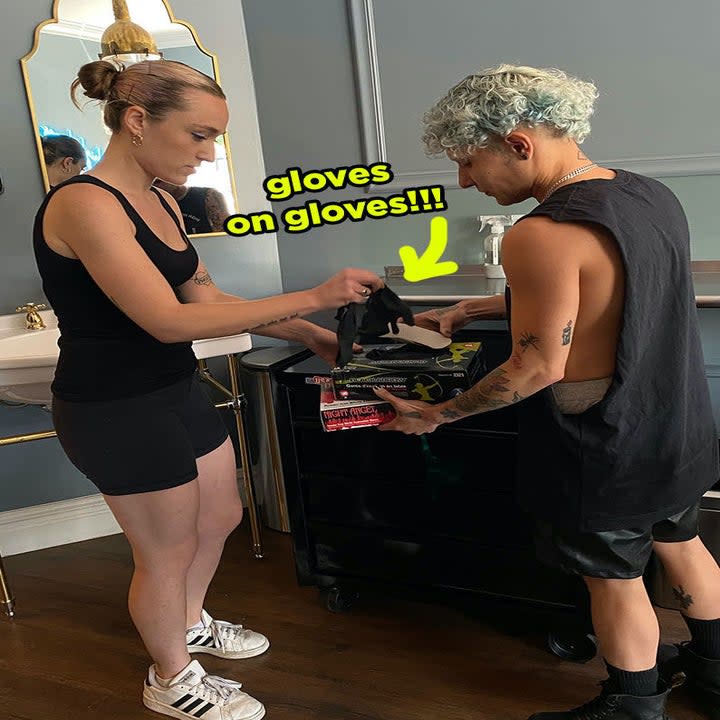
I think I had to re-glove upwards of 20 times in the 2 hours that I was tattooing. Every time you touch anything that MAY be contaminated — surfaces, clothing, anything — you need to re-glove.
It's important to note that tattoo artists learn all this stuff in a 3-hour long infection control course for estheticians that ends in a written exam and, of course, a license to practice.
I was told re-gloving and all the other procedures become second nature once you've been doing it long enough, but for me, I was like a lost, frustrated puppy.
2.NEVER touch your cellphone while tattooing unless you've wrapped it in a clear bag or something.
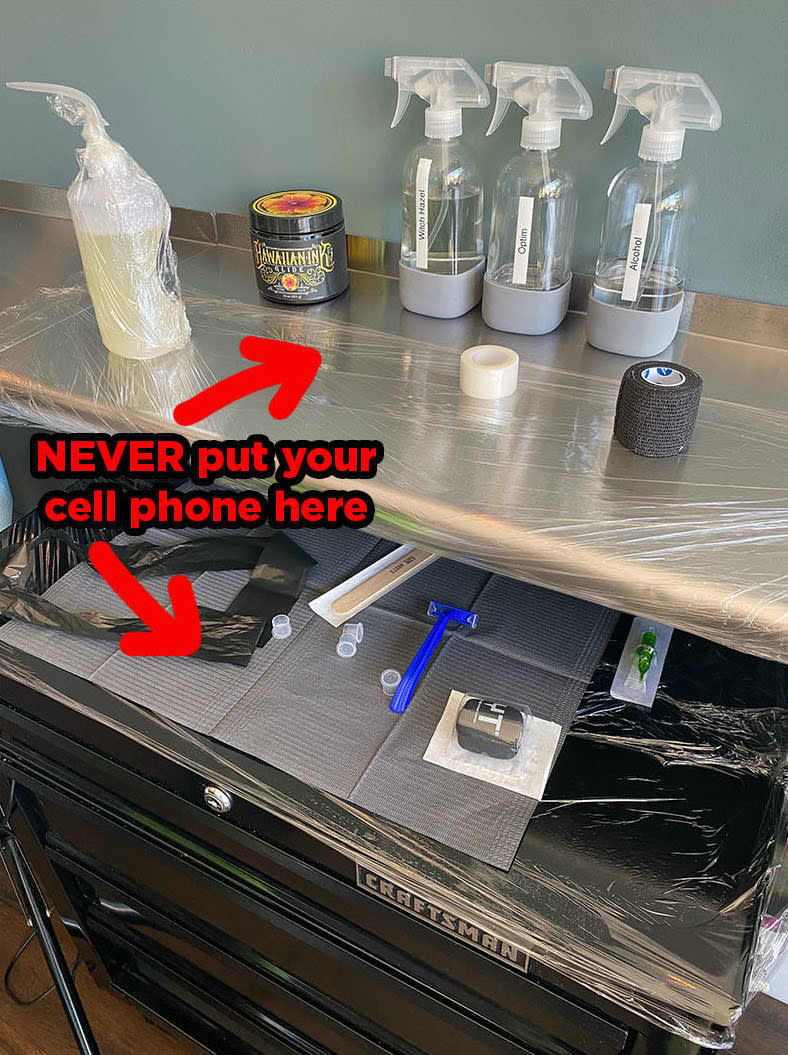
They're the germy-est things maybe ever, so I feel like this makes sense given all the disinfecting protocols. RE-GLOVE!
3.Once you get behind a machine, you have to practice tattooing on fake skin, or sometimes even pig skin.
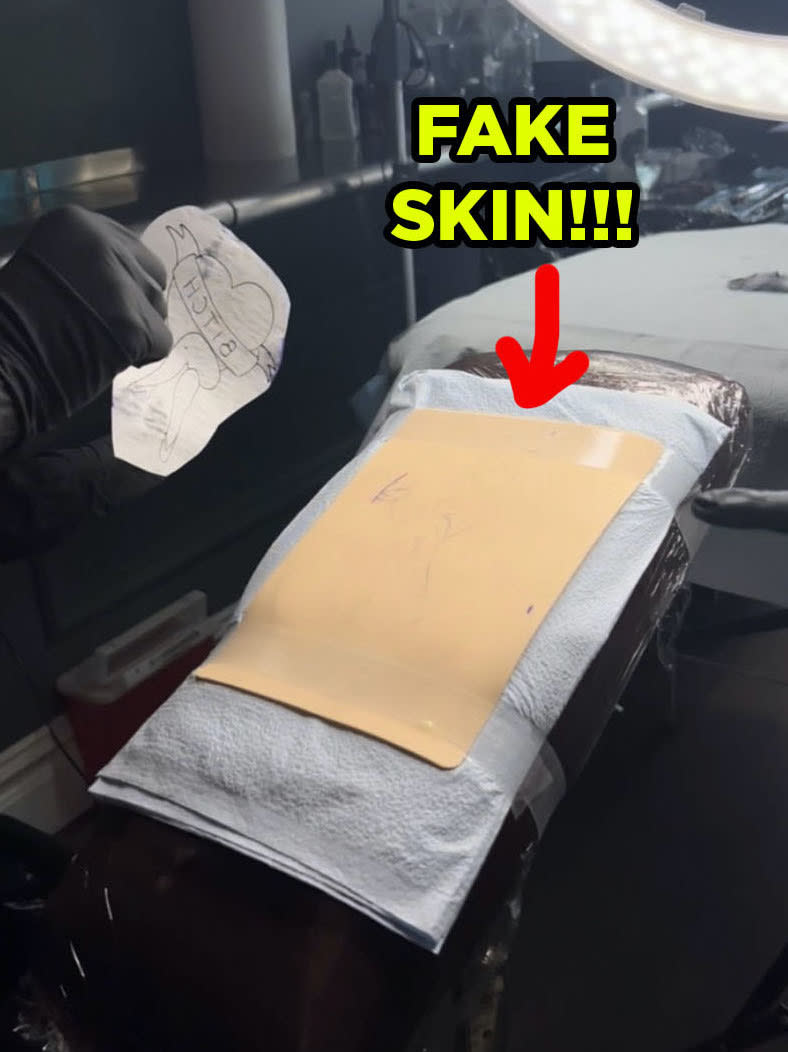
We stuck with fake skin, which is basically just sheets of silicone. Some people also practice on citrus because of how pore-like the peel is, but practicing on pig skin, no matter how gross it may be, is obviously gonna be the most similar to human skin.
4.You can't tattoo over birthmarks, moles, or any other skin condition.
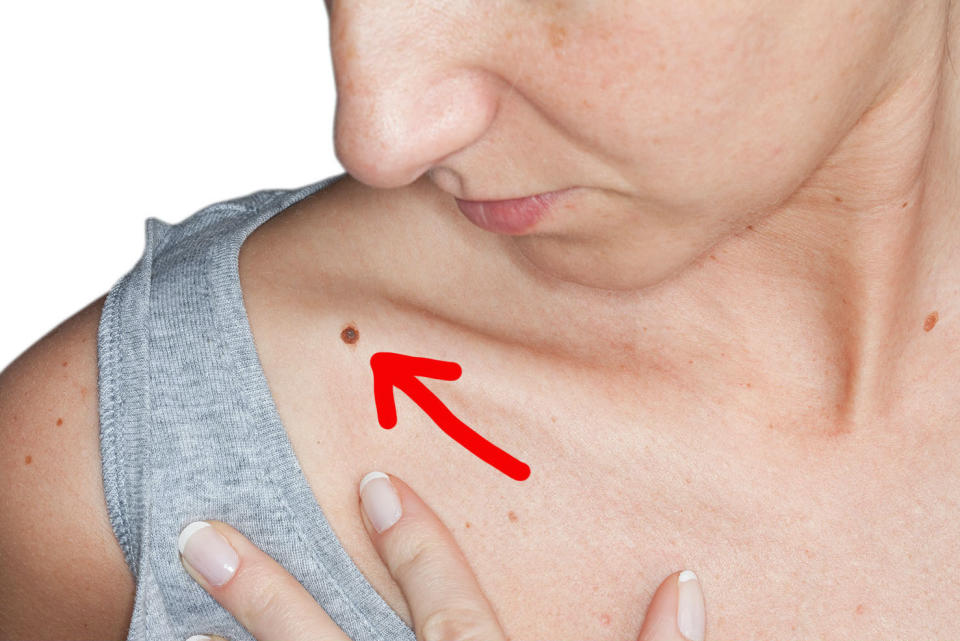
They often affect the texture of the skin, and more importantly, tattooing over them will keep you from being able to tell if they grow, become cancerous, etc.
5.The most common tattoo requests they get are butterflies and roses.

Shocking, I know!!!
6.Unsurprisingly, you should never get tattooed while you're drunk or hungover.
E! / instagram.com
Doing so 1.) is not a good look, and 2.) will make you bleed more.
You should also make sure to eat and be well-rested and hydrated before getting tattooed as it's very draining on the body.
7.Color theory in tattooing is an art in and of itself.
8.Promoting yourself on social media is an overlooked part of the job.
E! / giphy.com
These days, tattooers' portfolios are essentially just their Instagrams. It's not just word of mouth anymore because a lot of clients find you online. For a lot of artists, it's a necessary evil.
"We have to know how to make Reels, and we spend more time making posts," Szabla said. "I like to finish work when I finish my tattoos, but sometimes, I have to spend another two hours on social media to promote it."
9.There are a bunch of types of tattoo machines, with the two most popular being coil and rotary.

All the artists at High Hopes used rotary machines, which are the more modern models. Coil is the kind you've probably seen more often, but the rotary is definitely a lot sleeker and a lot less maintenance. You can also get rotary with cords or wireless — I was gonna be using a wireless rotary machine!
"Tattoo artists used to make their own coil machines back in the day," ET told me. "I think the rotary machines made tattooing more accessible as a lot of people are turned off by the mechanics of making your own machine."
10.There are lots of different kinds of needles, with them either being for outlining or shading.
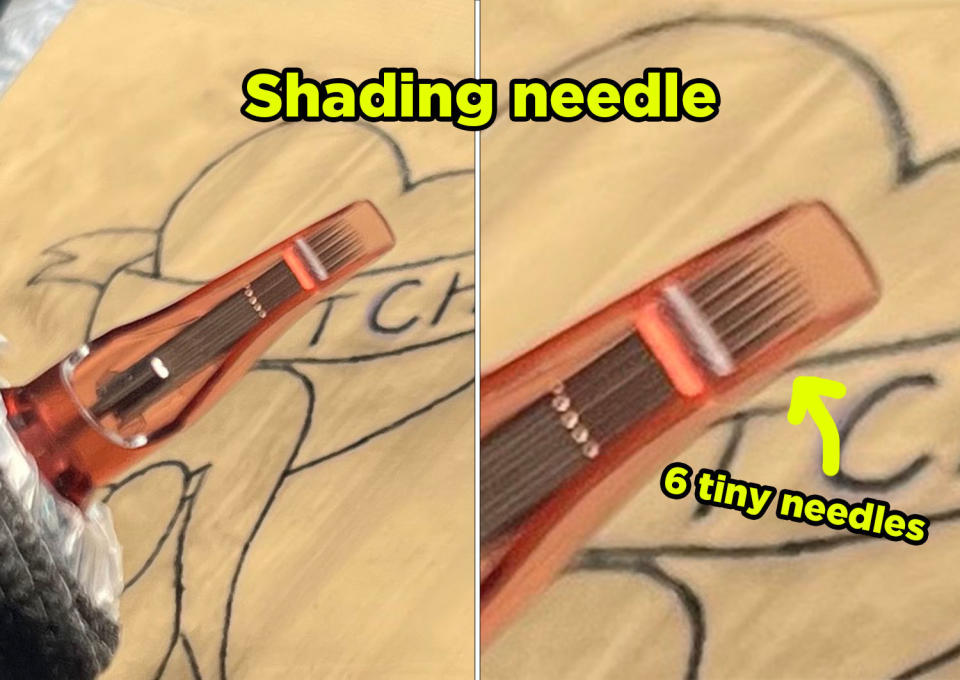
The needles come in all different sizes to achieve different thicknesses of lines. Fine line needles are where several tiny needles come together to make a point, and shading needles have a bunch of needles in a straight line. I started using a thicker fine line needle since I felt like it better suited the design. (I'm not gonna lie, I forgot to take a pic of the fine line needle since I was too excited to start. Sorry!!!)
11.Apprentices usually spend months working on their craft before ever getting behind a machine.
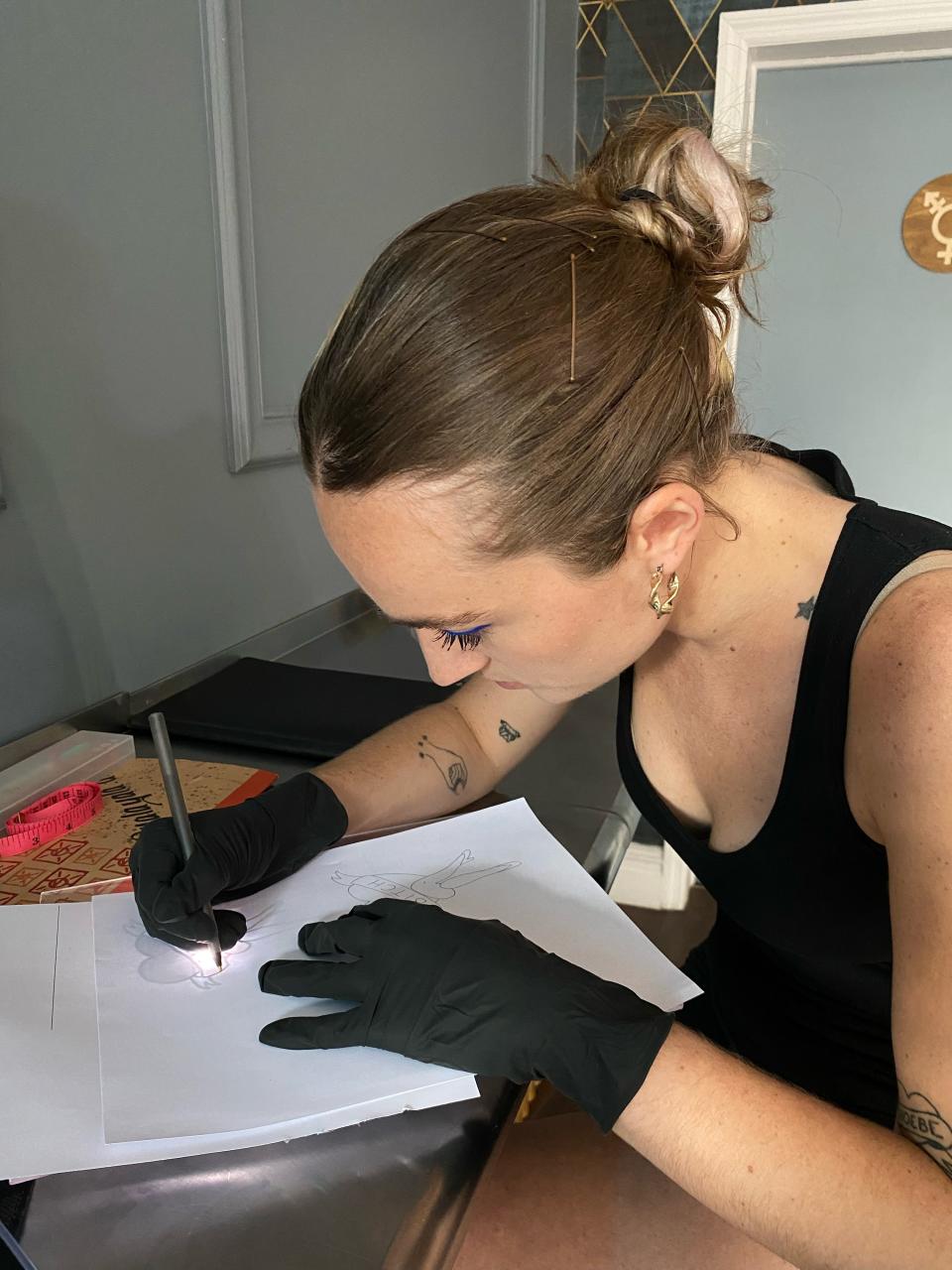
Obviously, we expedited my experience a lot so I could write this piece on it, but just know this is DEFINITELY not common practice.
12.A common exercise for apprentices is tracing their designs over and over again until they're perfect.
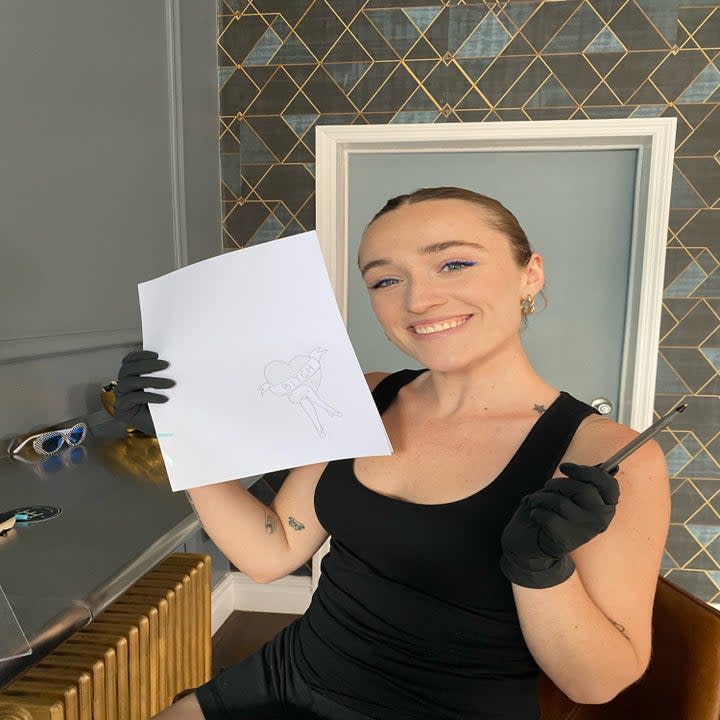
I was pretty happy with my first go, but I was quickly met with a "Great, now do it 10 more times." Despite my next multiple efforts, we ended up going with my first one — I think I started overthinking it. LOL!
Ilia then showed me how to print my best sketch onto stencil paper so that it could easily be transferred onto skin (or fake skin, in my case), and with the design all ready, we started setting up the space!
13.Every artist sets up their station with their own personal preferences, but across the board, setting up involves a lot of disinfecting, re-gloving (over and over again), and saran wrap.

As long as everything's sterile and all the basic protocols are followed, it doesn't really matter how you set up your station and equipment. All artists have their preferences, and it was really interesting to see all their different methods. Ex: What goes where on their table, how they like to wrap the grip on their machine, etc.
However, me setting up my station was a fucking farce. First off, saran wrap is not my friend. Never has been. Saran wrapping with gloves on also added a new level of difficulty for me. Let's just say I wasted a lot of it, and that I'd be concerned if I walked into a tattoo shop and my artist's table looked like this. Mine was still technically correct and properly sanitized though!!! 😌💅
14.There are certain tattooing necessities every table needs.
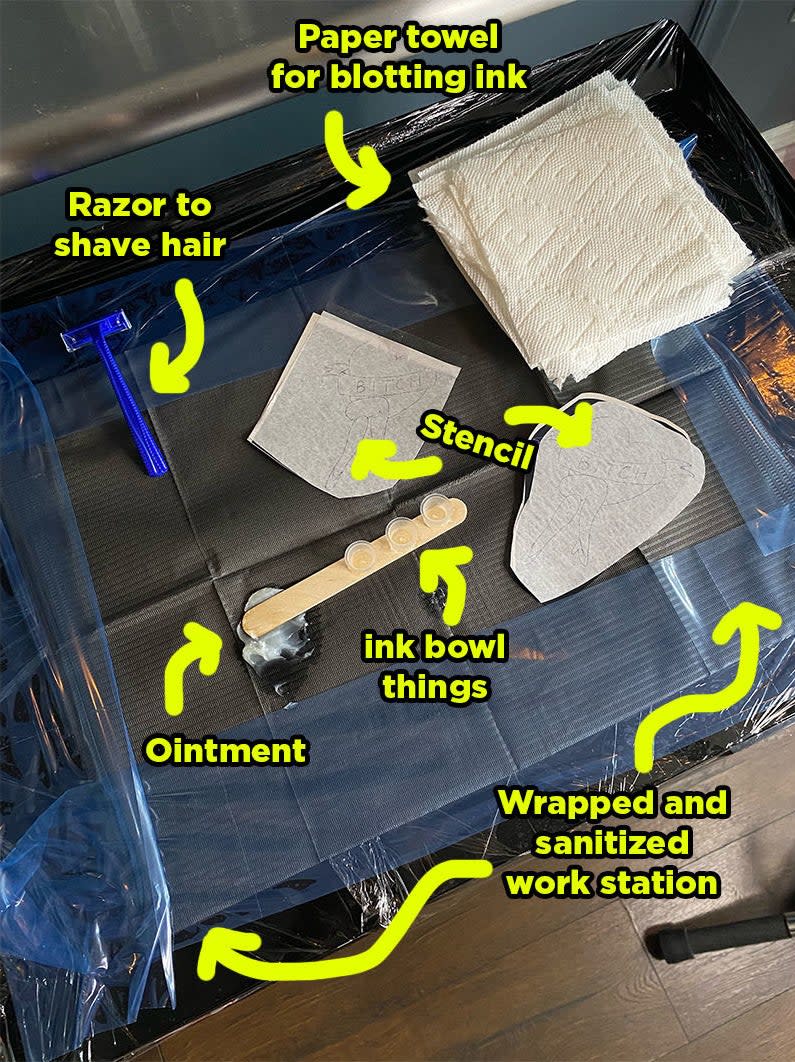
Here's your full list:
1.) A razor for shaving off any hair your client may have on the area you're tattooing.
2.) Squares of paper towel for blotting and wiping the area.
3.) A dollop of ointment to make your machine glide easier and soothe the skin.
4.) Little bowl things for your ink.
5.) Your stencil at the ready.
15.You have to wrap your machine — and its cord, if it has one — in plastic wrap and then apply a grip.
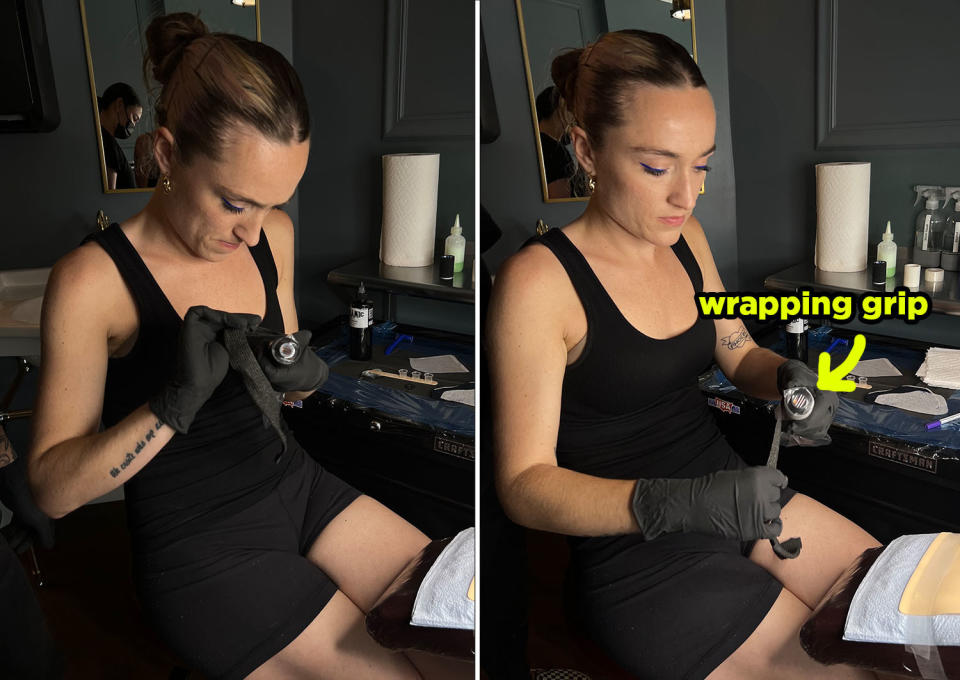
Here I am (at a very flattering angle) applying the grip to the machine. The purpose of the grip is to make holding the machine more comfortable, and in turn, have it be easier to use.
16.You sometimes have to retrace your stencil with marker if it comes out too light.
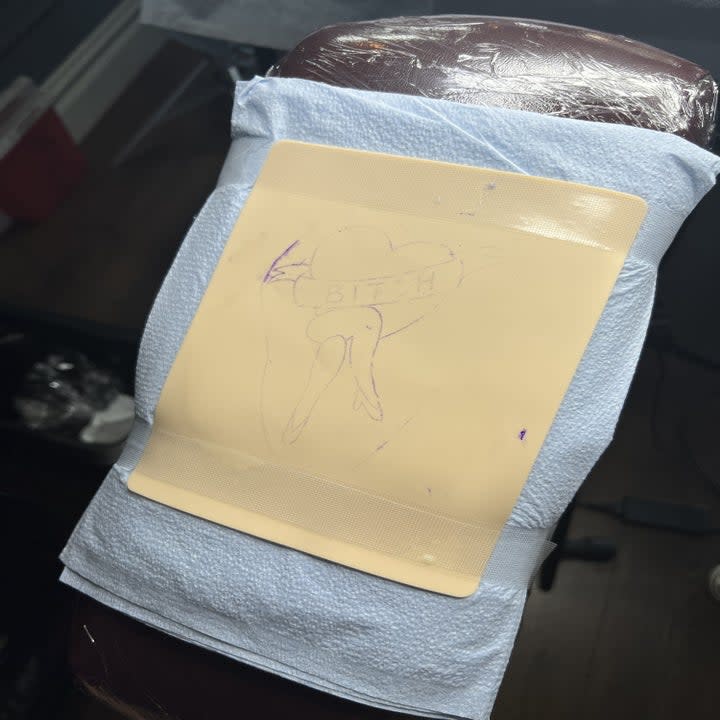
Applying stencils is a lot harder on fake skin, so the fact that it came out like this was pretty unsurprising. I was instructed to go over my phantom lines with a one-use medical marker, so I did that.
Fun fact: The liquid solution used to apply tattoo stencils is literally called Stencil Stuff.
17.The power you feel when first holding a tattoo machine is nothing short of EXHILARATING!!!!!!!
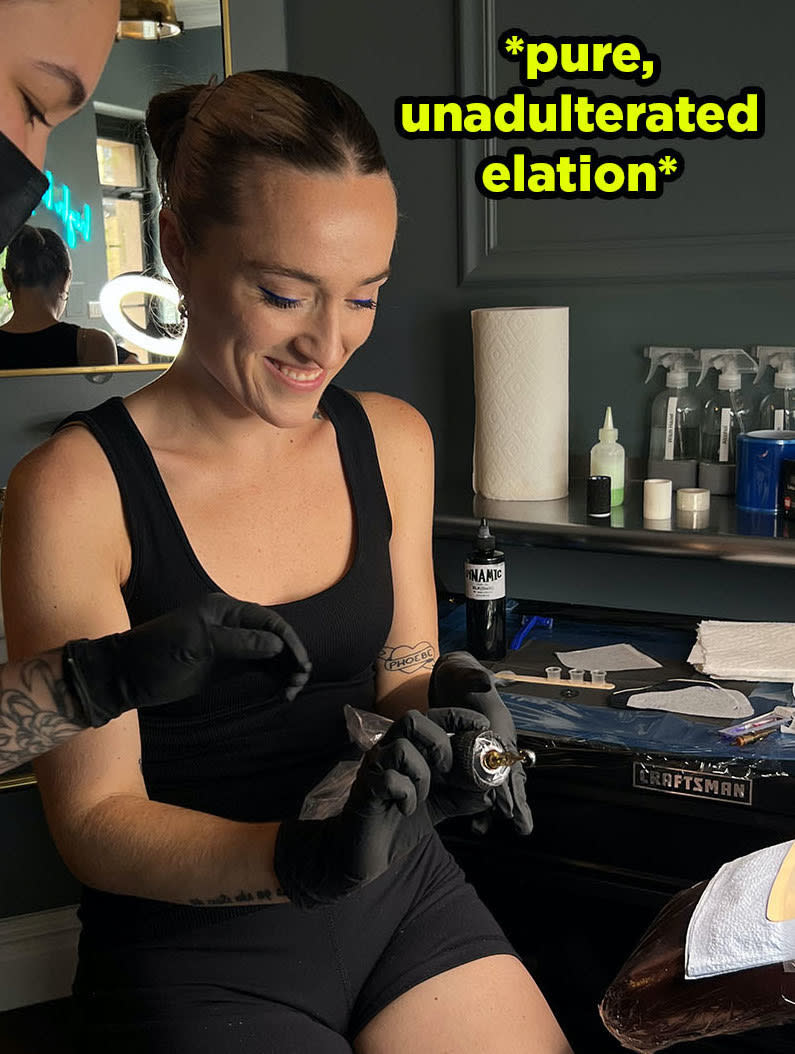
Once Ilia showed me how to turn on the machine, I was hit with a bolt of excitement. I JUST WANTED TO DO IT ALREADY!!!!!!!!!!!
18.It takes a second to get used to the machine's vibrations, and it'll most likely throw you off.
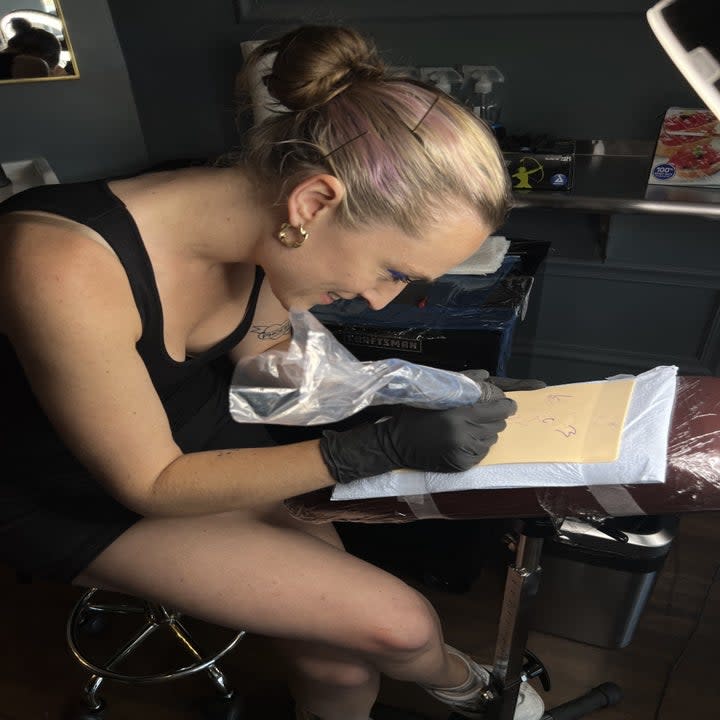
My first line was BAAAAAD, and I went WAAAY too fast because I was so amped. Not gonna lie, my first thought was, What did I get myself into?! Sure, I was also nervous, but the constant whirring of the machine, the feel of the grip, and the weight of it was definitely a little disorienting — at least that was my experience!!!
19.Technique is EVERYTHING, and there's a lot of it.
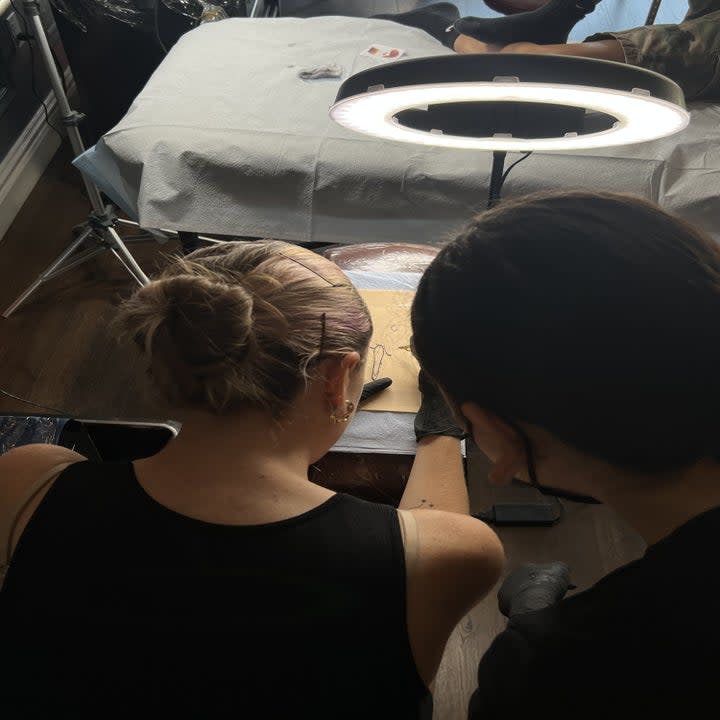
Getting thrown right into it was a bit overwhelming, but alas, I did my best to stay alert for the crash course. I learned as I went: You should always hold your machine a specific way, you need to readjust the settings on your machine if you're switching from fine line to shading, you need to stretch the skin, you should blot the skin instead of wipe, etc. etc. I loved every second of it, but all at once, it was A LOT.
20.You run out of ink quickly, and it pools up, so it can be hard to see what you're doing.
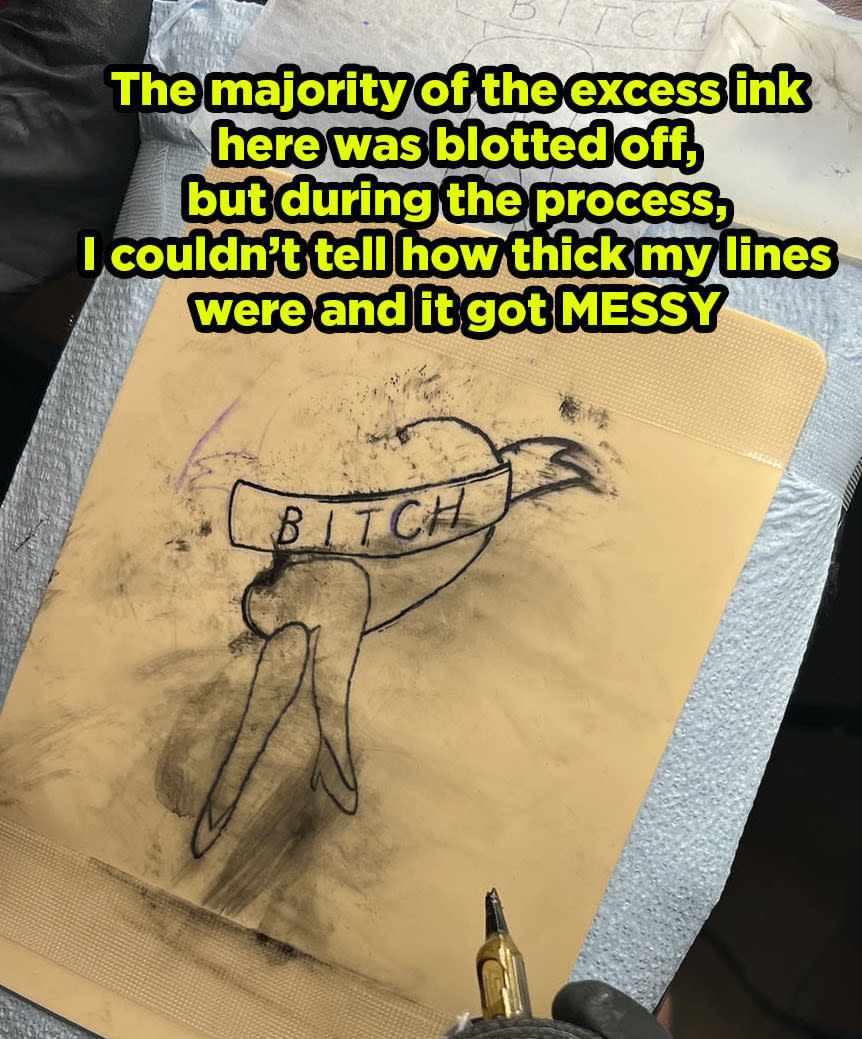
I was first taught a method called "riding the tube" that often helps beginners draw straighter lines. "Riding the tube" just means that your needle is adjusted so it only sticks out a little bit. Personally, I didn't like this method: The pooling of the ink made it a lot harder to see what I was doing, but I guess it makes your hand steadier or something...? Once I adjusted the depth so that the needle stuck out more — aka "riding the tip" (LOL) — I actually found it a lot easier.
21.Shading is a lot easier than line work (IMHO).
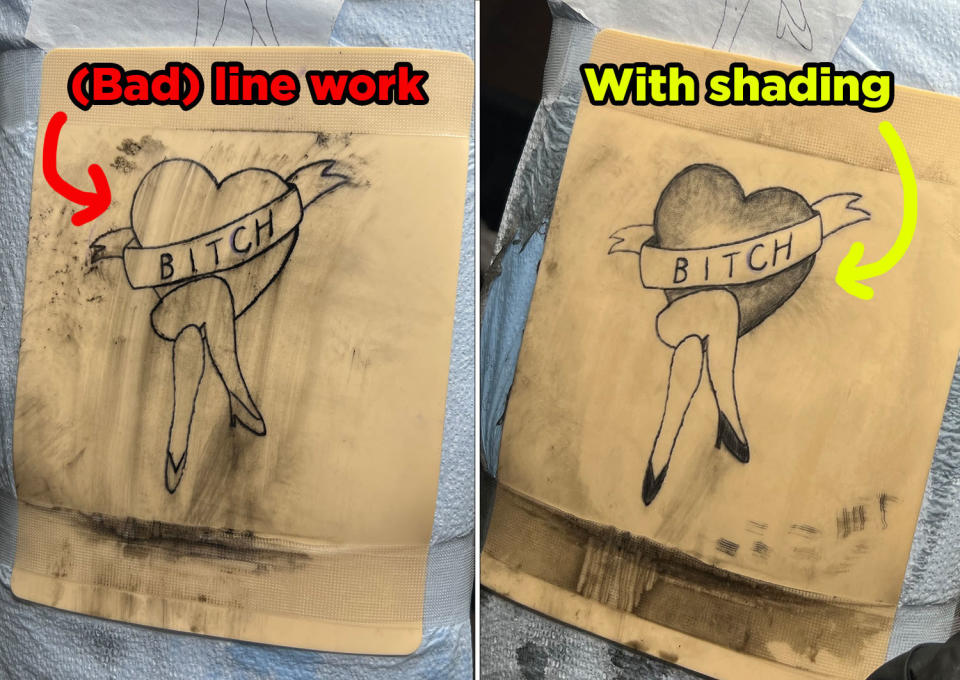
With line work, you need to be careful and go reeeeeeally slow. Every movement has to be deliberate, whereas with shading you have a little more leniency. Shading involves quick circular motions — the tighter the circle, the darker the shading. Secret: Shading helps hide any mistakes you may have made with your line work.
22.Shading comes out SOOOOO MUCH lighter than you'd think it would.
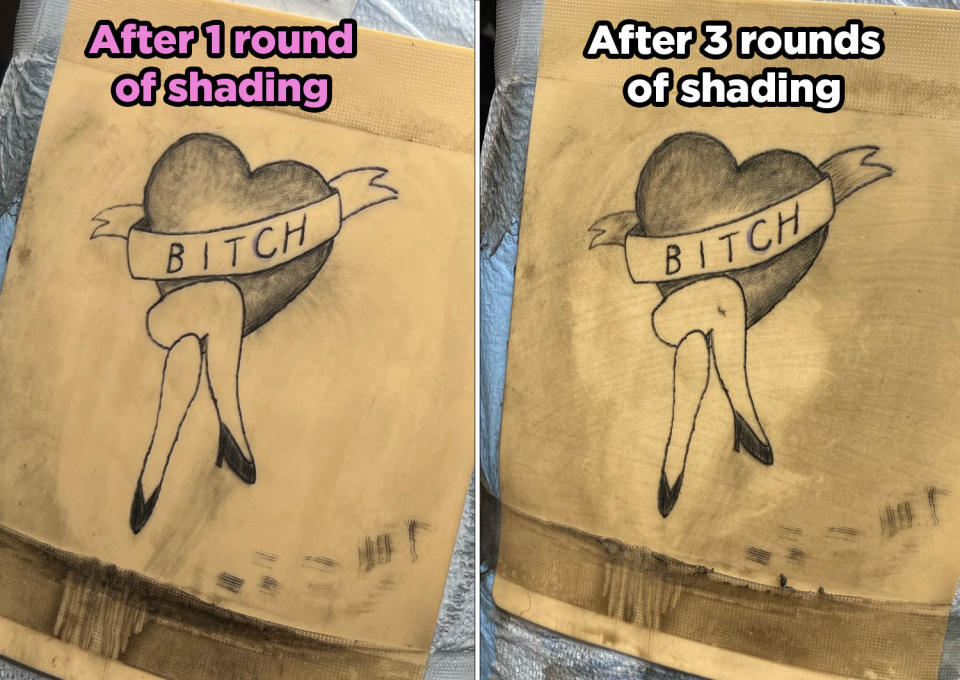
Before I blotted the ink and cleaned off the fake skin, I thought my shading was gonna be way too dark. Like, while I was shading, the heart was pretty much entirely black. Once I cleaned it off, the shading was so light that I had to go over all of it, like, three more times, and it was still pretty much the same!!! So, just be wary: Shading is deceptive!!!!!!!!
23.You have to be just as hygienic with cleaning up your station as you were setting it up.
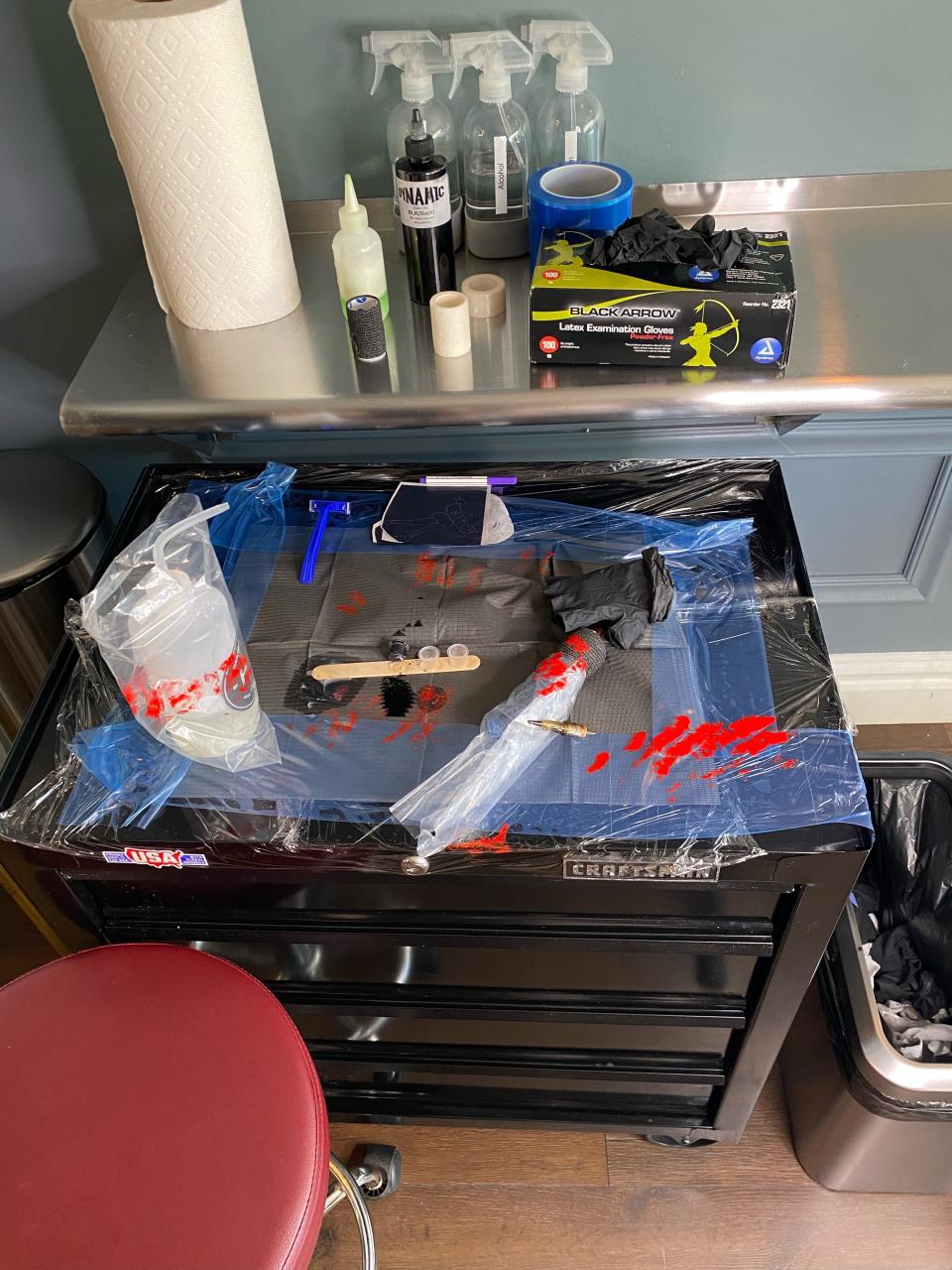
Just as I finished up my tattoo, ET went ahead and smeared red ink all over my work station. Apparently, they did this to teach apprentices (me, in this case) about contamination...needless to say, multiple re-glovings occurred shortly thereafter.
24.And lastly, my biggest takeaway from this experience was witnessing firsthand how empowering tattooing is, and just how much care, artistry, and heart goes into it.
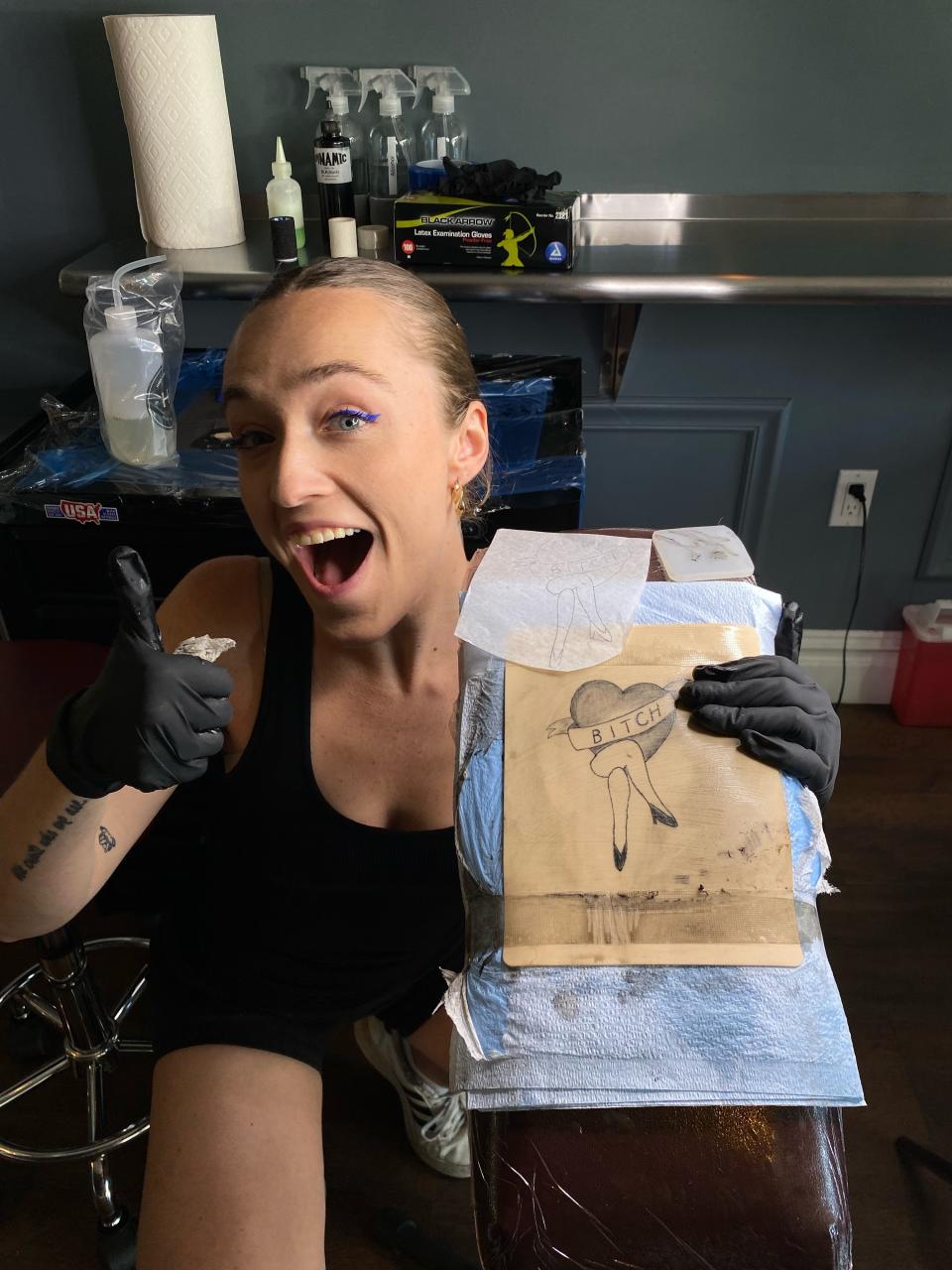
I was on a total high after finishing my tattoo. Like, it was genuinely one of the best experiences of my life. I got the same adrenaline rush I've had when I've gotten tattoos, and I felt on top of the world — I can't imagine how much more exhilarating it is to actually tattoo someone's body and share in that experience with them!!!
I was so impressed to see just how much care and preparation goes into each and every tattoo and to witness all the different approaches the artists had. From the consultations to designing to redesigning to promoting yourself on social media to setting up the space to actually TATTOOING, there's so much more to this art than I'd ever even considered.
Finally, I loved seeing how much love the artists had for their clients and their work. Hearing their stories of tattooing loved ones, those grieving, those who'd overcome struggles and were looking to celebrate their resilience — it was all infinitely inspiring. It was seriously one of the most magical experiences ever.
(And this was clearly just scratching the surface of tattooing.)
All in all, my day apprenticing at High Hopes was everything I'd hoped it'd be and so, SOOOO much more, and I couldn't be more grateful.
E! / giphy.com
AND YOU BETTER BELIEVE I KEPT MY TATTOOED SKIN FLAP!!!!!!!
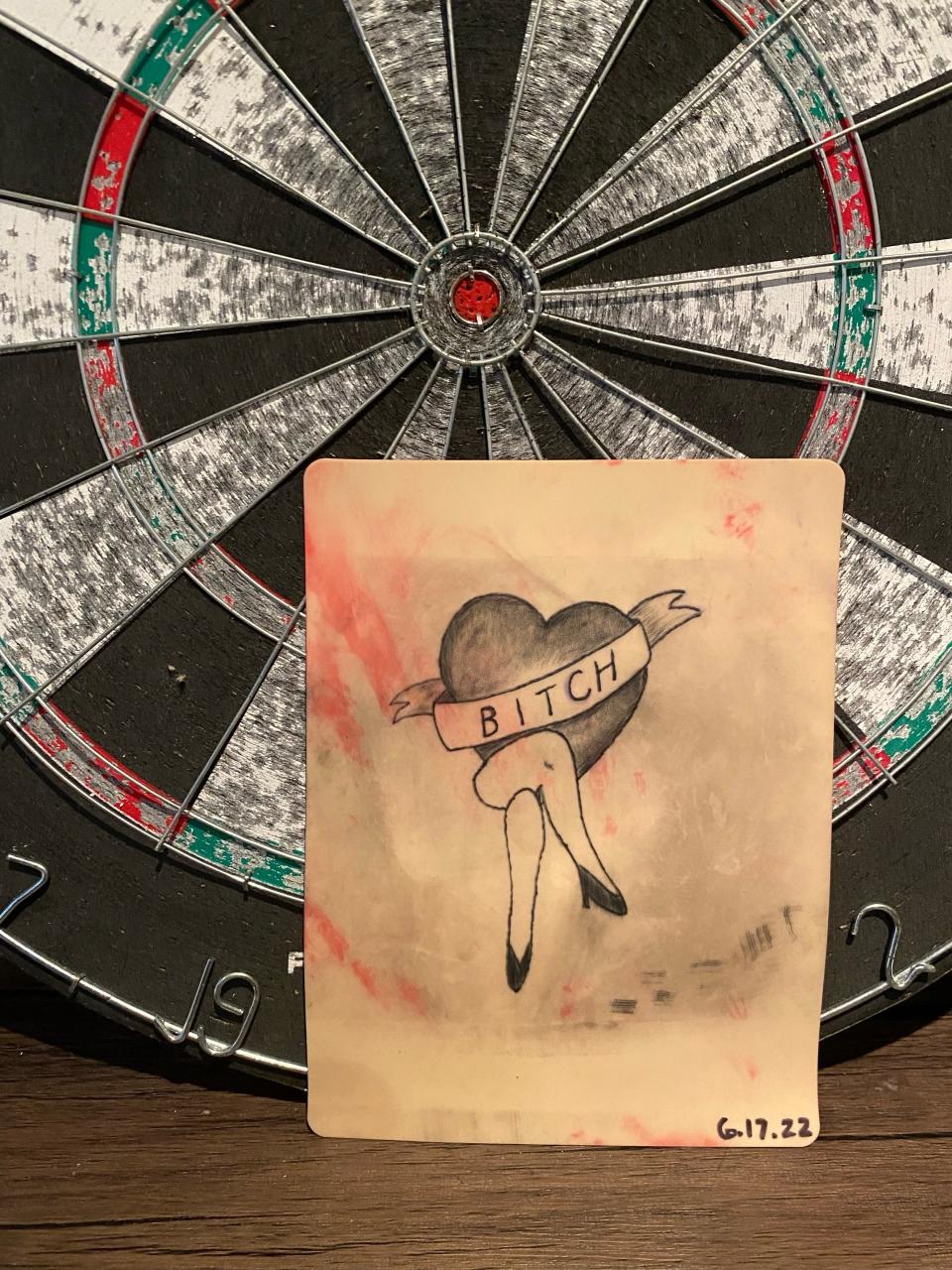
It's sitting on my desk while I write this post. I can't wait to frame it!!! 😌💕
And shoutout to ET for the Pollock-esque addition of red ink.

